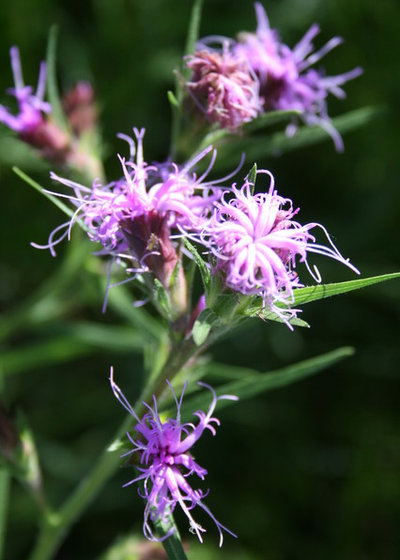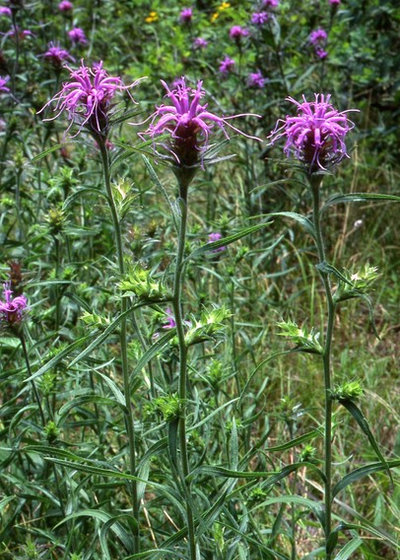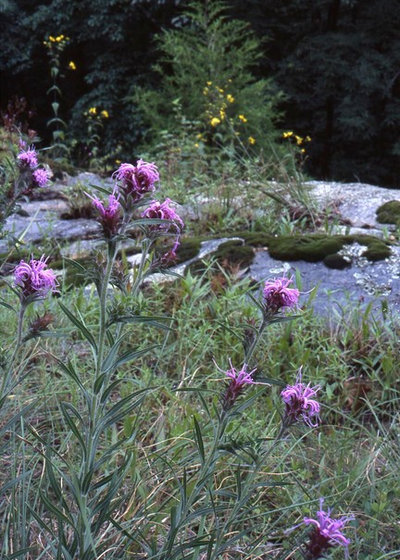We should certainly see scaly blazing star (
Liatris squarrosa) in the garden more often. This shorter, almost-ground-cover Liatris
species grows to about 2 feet tall and wide, and is native to much of the middle of the U.S. all the way east to Maryland and Florida. As one of the many blazing stars that bees, butterflies and moths would love to see in your landscape, it produces larger, but fewer, purple flowers in early to mid summer.

Benjamin Vogt / Monarch Gardens
Botanical name: Liatris squarrosaCommon names: Scaly blazing star, scaly gayfeather, scaly liatris
Origin: Native from Texas north to Colorado, South Dakota and Minnesota in the west, all the way eastward to Maryland and south to Florida
Where it will grow: Hardy to -30 degrees Fahrenheit (USDA zones 4 to 8; find your zone or find your ecorgeion)
Water requirement: Medium to dry
Light requirement: Full sun to partial shade
Mature size: About 2 feet tall and wide
Benefits and tolerances: Very drought tolerant; good butterfly plant
Seasonal interest: Blooms in early to mid summer, followed by ornamental seed heads in fall
When to plant: Potted or bare-root plants can be put in from late spring to late fall; sow seeds in late fall through winter.

William Moye
Distinguishing traits. Unlike other more commonly grown blazing stars, this native has larger, but fewer, flowers. Each of the multiple flower stems is not a solid spike of small flowers, like prairie blazing star (
Liatris pycnostachya) or even meadow blazing star (
Liatris ligulistylis), but is composed of well-spaced blooms that are each about ¾ to 1 inch wide. Plants bloom from top to bottom over a period of about two weeks, like other Liatris species do.

William Moye
How to use it. Scaly blazing star prefers dry soil, even somewhat rocky and sandy soil, and is very drought tolerant. It’s perfect among a bed of shortgrasses, like sideoats grama (
Bouteloua curtipendula), prairie dropseed (
Sporobolus heterolepis) or little bluestem (
Schizachyrium scoparium), and given its thinly leaved, open and airy habit, it may be best planted in groups of three to five for a stronger pop. You also could also tuck it into a rock garden and let it have the show more to itself.
Planting notes. Growing from a bulb-like corm, scaly blazing star is fairly easy to transplant, even as the corm grows year by year. Planting in early spring to late fall is fine, and seeding should happen anytime after a few hard freezes in winter. Don’t fear if you don’t have a rocky, sandy or other well-drained soil — clay works just fine, too, especially if it’s on a slope or higher ground that dries out in summer.
Learn more about gardening with native plants in your area





